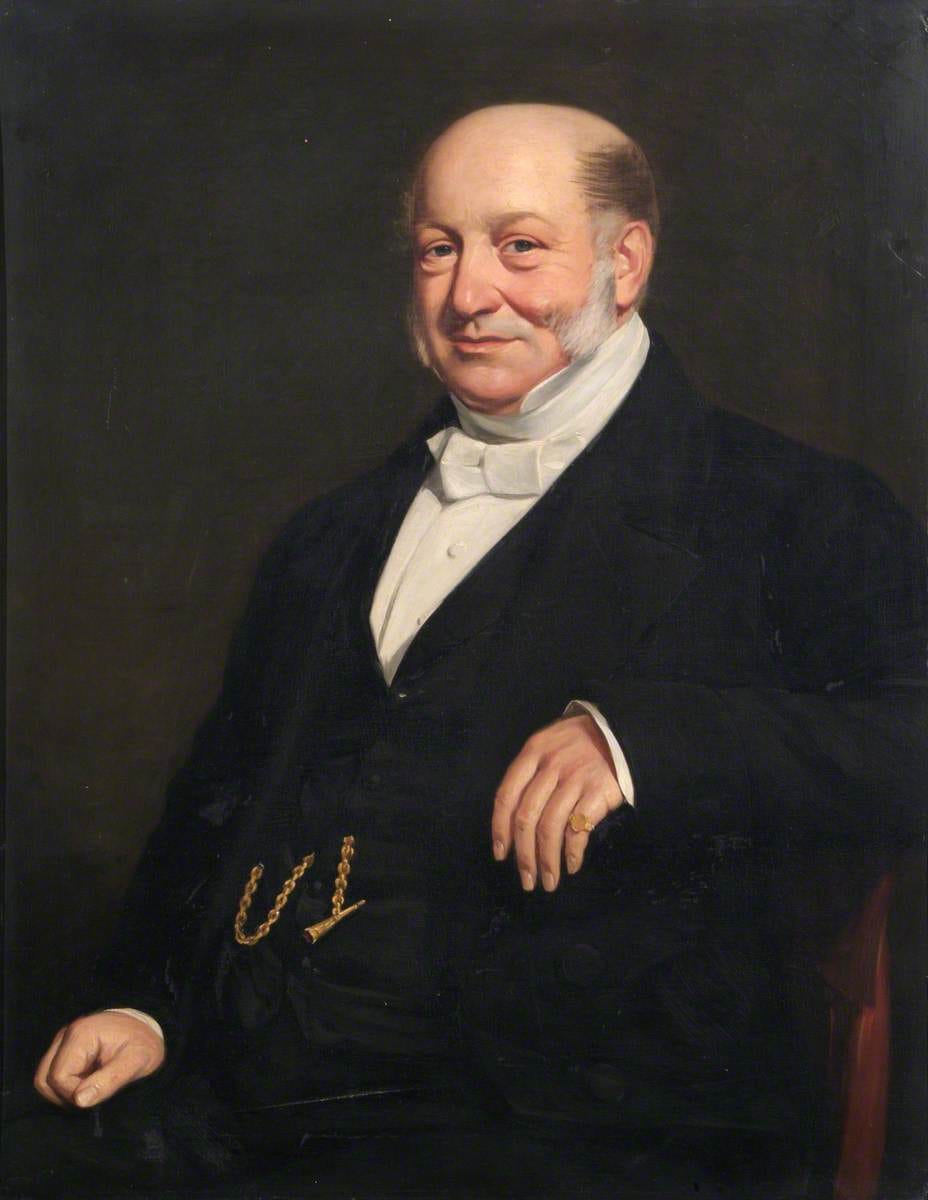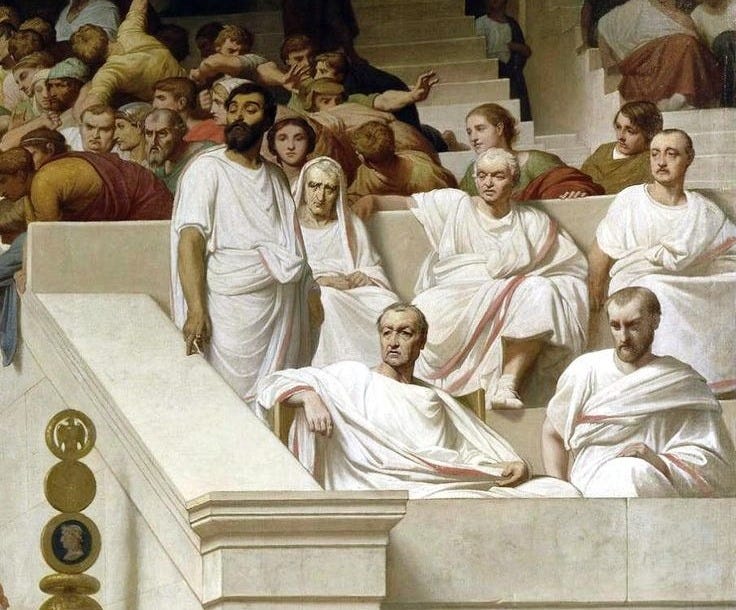Chromatic Rebel #2: why is the West so color-minimalist?
Have you ever observed that Western culture seems to be more minimalistic in terms of color than any other? Here I examined the reasons behind it.
In my previous Chromatic Rebel post, I examined the current trend to use beige, black and white in everything around us (especially in fashion and design), a tendency that´s making our surroundings monochromatic and dull. This fashion is not innocent— there are some worrying ideas behind it, and it´s connected to some popular concepts rolling around, like “clean girl” or “old money” looks.
However, this chromatic palette is not new, and has two main origins that go way back in time: one is geographical, and the other is religious.
The geography of it all
One ancient reason for Western culture to be chromatically poor is not ideological at all, but simply geographical: Europe has fewer natural colorants than other regions of the world. When you study the history of colors (as I have done, obsessively) you´re struck with the realization that most of the good pigments and dyes ever used in history were not available in Europe.
Indigo comes from India and Latin America, cochineal from Mexico, lapis lazuli from Afghanistan, Egyptian blue was, of course, invented in Egypt, colorants from spices like saffron and turmeric came from Asia and the Middle East, Tyrian purple was from Lebanon…even red ochre, that is so abundant everywhere, was imported from Sinop, in Turkey, during the Roman Empire because it was considered the best of the best.
Meanwhile, Europe was lacking a bit in good pigments and dyes. There was woad (that the Mediterranean cultures mostly ignored because it was a color of the barbarian north), a pale blue that couldn´t compete with indigo, Spain had vermillion (incredibly toxic) because of the huge mercury mine of Almaden, and some plants were used for dyes like reseda (yellow) and madder (red). Green dyes weren´t even a thing (unless you mixed yellow and blue, something generally forbidden in the Middle Ages). To add insult to injury, most of the available pigments were deadly: made with lead, mercury or arsenic.
The Romans preferred to dress in white, and most people through ancient times and the Middle Ages would have dressed in some faded yellow or brown. Remember all those historical movies where people dress in brightly colored clothing? It´s not real. Until the 15th century, there wasn´t even a decent black dye. Aside from the landscape, most Europeans who lived before the 18th century wouldn´t have seen many bright colors unless they glimpsed some nobles clothing, or if they could see a painting or tapestry in a church (the only place where commoners could see art until museums were invented in 19th century).
I am convinced that one of the reasons for Europeans to colonize the rest of the world lays in having a better access to colorants. The Spanish certainly benefitted from all the pigments and dyes they extracted from America.
Trevor Noah says in one of his shows that he thinks colonization came from Europeans wanting to have spices in their food (as in more flavor), and I would add that they wanted to have more color in their lives as well.
Therefore, one one reason behind the color-minimalist Western culture comes from the fact that Europe is not a naturally colorful continent. The second reason adds the ideological layer that cemented this aesthetic.
Luther ruined the fun
The second reason, and the most relevant to our current predicament, lays in Protestantism. When Luther decided to break with the Catholic Church that fateful day of 1517, he was starting a color revolution, even if he didn´t know it yet.
This is the thing: Luther, and other theologians like him who rejected the Church of Rome, were against color because bright colors were the signature of the Vatican. The Pope and his cardinals wore either intense purple or bright red, and the churches of the Renaissance were covered in gold, colorful tapestries and paintings. The Vatican rejoiced in its wealth, and showed their influence through colorful liturgy and outfits.
Color always meant luxury, the Catholic Church was (is) very powerful and rich, and didn´t have any problems showing off— they didn´t pretend to be humble. Luther was angry about this shameless behavior, and, for him, one of its sinful elements was excessive color everywhere. As a consequence, from them on Protestant theologians and priests would reject bright colors like red, green and yellow, and would adopt a more subdued palette of black, white and grey.
If you picture the first European pilgrims who reached North America (who were from Protestant countries), you might remember they wore severe clothing in black, grey and white. Portraits of Protestant societies of the 16th and 17th centuries often show a sober aesthetic, minimalistic clothing in black and white, covered hair, and no makeup or jewelry. Churches too became completely bare, without images or decoration of any kind.
This legacy reaches to our present. Most of the countries where the Industrial Revolution took place in the 18th and 19 centuries were Protestant countries: the United Kingdom, the United States, Germany, the Netherlands, and Scandinavia. These countries stablished the first factories and assembly lines, and made the first mass produced goods, starting with textiles and clothing. The result is that most of Western clothing, architecture, interior design, or daily objects follow this black-white-grey palette, adding navy blue a bit later.
Think of every household appliance in your home, your furniture, the color of your house walls, the design of your office, the interior of your car, the color of most suits and formal clothing, the color of almost any uniform…are they mostly black, white, grey or navy blue? Probably yes. Even Ikea has made fashionable the all-white decoration style that is typical of Sweden and all Scandinavia in general (all Protestant countries).
Meanwhile, people from Catholic countries are usually more exhuberant with their style. I had a Serbian friend in college who used to point out to me how grandmas in Spain always wore makeup, jewelry and a perfect hair style. My grandma was like this: perfect hair, and always wearing high heels and perfume.
I didn´t think anything of it because most grandmas I knew were the same, and you could say something similar of Italian ladies, but when I reflect on it now, I realize that this is more common of Catholic countries like Spain, France, Portugal and Italy (Greece is an Orthodox country, and I am not well versed in what this mean aesthetically speaking)
These differences are not a natural occurrence, they are a consequence of history. The Protestant palette was stablished in the 16th century by Luther, and continued until today in your phone, your jacket, your jeans, your car, your kitchen, your classroom or your office.
You might think that these colors are soothing, or that a minimalistic environment is better for your senses…but that´s completely cultural. Many non-Western countries favor colorful houses and clothing (like Mexico, India or Senegal) and they are not uncomfortable at all. For them, this is the natural and preferrable state of things.
Clean girl and old money
Now, what about this “clean girl” and “old money” nonsense? The old money look comes from what I said above about the Industrial Revolution. The first business owners, the big traders and the big colonizers of the 18th and 19th centuries were mainly from Protestant countries, where this aesthetic was already settled.

They stablished the dress code and styles that were fashionable because they had the power (as it always happens). These wealthy families made their fortune in Protestant societies, either because of colonialism or because they invested in the Industrial Revolution, or both, since they were interconnected. They were the creators of the business world and its aesthetic the way we see it today.
Have you ever seen a bank with colorful furniture? Or watched the people working in Wall Street wear pink, orange or yellow attire? Probably not. Being serious, competent and wealthy means wearing sober and monochromatic suits, and everyone knows it. Advertising, television and movies were the last nail on the coffin to make this palette the one associated with money.
Clean girl contains a similar idea but it has a more religious undertone. Again, it focusses on what Protestant morals would deem “appropriate”: a dark and neutral palette (white, beige, grey or navy blue), and a more classic and traditional style of clothing, with little makeup, minimal jewelry, and nothing strident or flashy. It´s supposed to be a little bit innocent, and not too sexy (but you don´t want to be a nun either because that wouldn´t be considered attractive).






The ideological concept behind this term is being a “modest” woman, without showing too much personality: a good girl, someone who isn´t remarkable, who complies with the rules and behaves in the way that´s expected of her. Being perfect without calling attention to yourself.
The fact that this style is called clean has a moral tone that is very troubling to me. It´s not only that this is the epitome of the good girl— it also implies the opposite is “dirty”, going back to judge women for their sexuality, and making us feel guilty or inappropiate when we don´t comply with the dress code.
And all of this because…Luther didn´t appreciate the Pope wearing red. Isn´t it shocking to realize that many of our cultural norms were made by someone hundred years ago…and we´re still obeying them?








